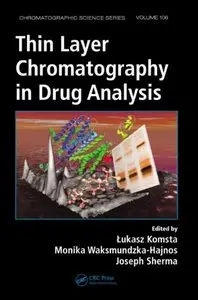Thin Layer Chromatography in Drug Analysis (Chromatographic Science Series, Book 106) by Lukasz Komsta, Monika Waksmundzka-Hajnos and Joseph Sherma
English | 2013 | ISBN: 1466507152 | 1067 pages | PDF | 25 MB
English | 2013 | ISBN: 1466507152 | 1067 pages | PDF | 25 MB
Used routinely in drug control laboratories, forensic laboratories, and as a research tool, thin layer chromatography (TLC) plays an important role in pharmaceutical drug analyses. It requires less complicated or expensive equipment than other techniques, and has the ability to be performed under field conditions.
Filling the need for an up-to-date, complete reference, Thin Layer Chromatography in Drug Analysis covers the most important methods in pharmaceutical applications of TLC, namely, analysis of bulk drug material and pharmaceutical formulations, degradation studies, analysis of biological samples, optimization of the separation of drug classes, and lipophilicity estimation.
The book is divided into two parts. Part I is devoted to general topics related to TLC in the context of drug analysis, including the chemical basis of TLC, sample pleparation, the optimization of layers and mobile phases, detection and quantification, analysis of ionic compounds, and separation and analysis of chiral substances. The text addresses the newest advances in TLC instrumentation, two-dimensional TLC, quantification by slit scanning densitometry and image analysis, statistical processing of data, and various detection and identification methods. It also describes the use of TLC for solving a key issue in the drug market—the presence of substandard and counterfeit pharmaceutical products.
Part II provides an in-depth overview of a wide range of TLC applications for separation and analysis of particular drug groups. Each chapter contains an introduction about the structures and medicinal actions of the described substances and a literature review of their TLC analysis. A useful resource for chromatographers, pharmacists, analytical chemists, students, and R&D, clinical, and forensic laboratories, this book can be utilized as a manual, reference, and teaching source.



